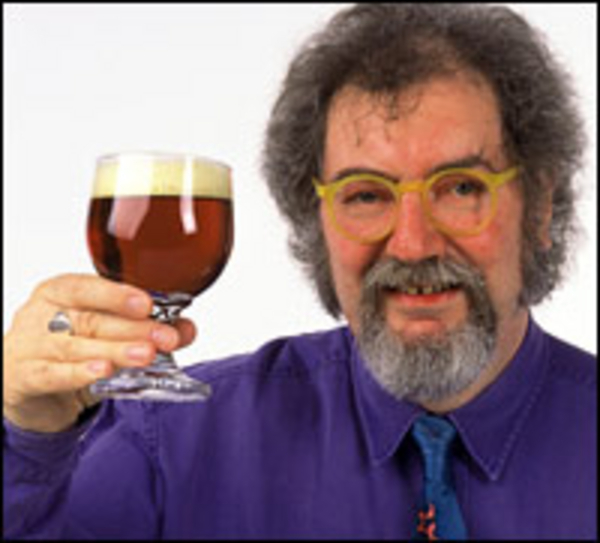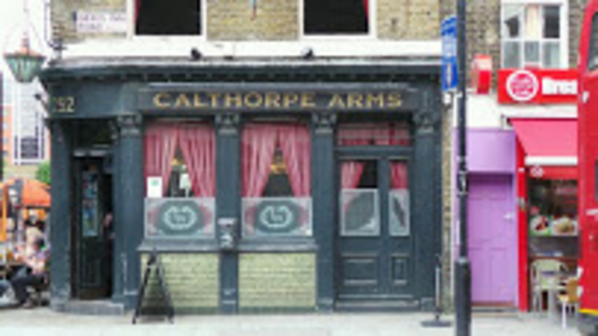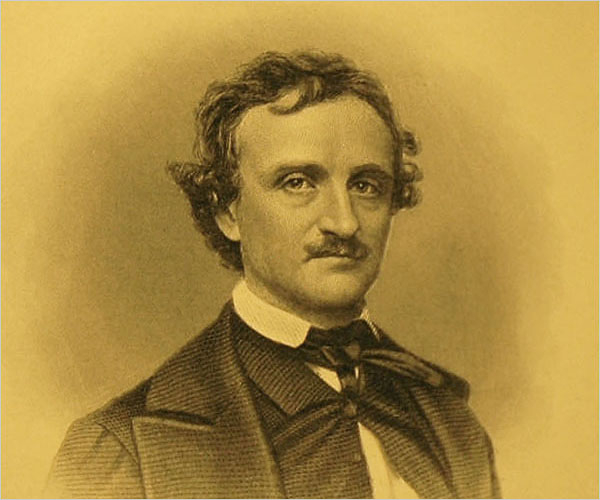How writers boosted beer's image
Added: Saturday, August 8th 2015

As the British Guild of Beer Writers prepares to hold its annual reception on the eve of the Great British Beer Festival, guild founder Roger Protz recalls, in a speech that marked its 25th anniversary, its early days, its associations with the late Michael Jackson (above) and the long struggle to win greater media support for British beer. For enquiries about guild membership visit www.beerguild.co.uk
The catalyst for the Guild was a man I never met and didn’t even know his name. He was a features sub-editor[copy editor] on the Guardian in the 1980s, a time when the paper ran two articles on a beer a year – that’s two more than it does today. Michael Jackson and I took it in turns to write the articles and I was told by people who worked at the Guardian that the following sequence occurred when a beer article arrived.
If it were Michael’s copy, the sub – who wore a cardigan and smoked a pipe – would carefully read it through, make a few stylistic changes and then mark it up for typesetting – these were still the days of hot metal setting. He would then set fire to his pipe, puff away for 10 or 15 minutes until the muse descended and then slowly write the headline for the piece: “Only here for the beer”.
Six months later it would be my turn. He would read through my copy, make a few changes for style, mark it for typesetting, then light his pipe, puff away contentedly and then slowly write the headline: “Only here for the beer”.
And that was the extent of newspaper coverage of beer in those days. I spent a long evening with Michael in the Waterside Inn, off York Way, King’s Cross, and we bemoaned the lack of support for beer in the British press. Michael was becoming well known in the United States and he grumbled that he was better known in the U.S. than he was in his own country – and by “own country” he meant, of course, Yorkshire.
But we needed action, not grumbling. I wrote to anyone I could think of who dabbled in beer writing and called a meeting at the Waterside Inn in 1987. So many people crowded into the room I’d booked that I had to stand on a table to address them and had to be restrained from declaring the socialist republic.
We’d discovered there was a surprisingly large pool of people passionate about beer and keen to write about it. And not just the Guardian covered the subject. The Oxford Mail and the Hornsey Journal, for example, had regular slots on beer and pubs, and to our amazement we found that Allan MacLean in Edinburgh had a fortnightly column in the Scotsman.
Things moved swiftly. We held our first annual meeting in 1988 and elected Michael Jackson chairman. Fuelled by copious amounts of Young’s Ordinary, the committee met once a month in the Calthorpe Arms in Gray’s Inn Road (below) and planned the first awards dinner.
From that launch pad, we can now look back on 25 years of achievement and success. A series of seminars on all aspects of brewing deepened our knowledge of the subject. Media coverage improved. When the Independent was launched, Michael Jackson started to write regularly for them while Michael Hardman won a Guild award for his work for the Daily Mirror. In Leeds Barrie Pepper was a veritable powerhouse, with both written and broadcast work on beer.
And books started to appear on a regular basis. I remember Michael Jackson regaling a meeting in Doggets Coat & Badge on the south side of Blackfriars Bridge with the story of a visit to Bateman’s Brewery in Lincolnshire where one of the directors asked him, rather like the Queen: “What do you do?” “I write books about beer,” Michael replied. “There are too many books written about beer!” the Bateman’s director thundered. In truth, there was only one major book on the subject at the time, Michael’s World Guide.
What would that Bateman’s director think now? Hardly a day passes without news of yet another book on the subject, most of them written by Guild members. The books are informed by the work we have done in one important area that gets little recognition. We have developed a language for beer that didn’t exist back in the 1980s. When Michael and I spent that fateful evening in the Waterside Inn we were drinking Everard’s beer from Leicester. I remember Michael sniffing and tasting a pint and saying: “Bit nutty that.” I agreed: “Bit nutty that.” We didn’t say any more on the subject, but I thought and I’m sure Michael thought too that “a bit nutty that” wasn’t a good enough way to describe the complexities of beer. Whole books and even encyclopaedias were dedicated to the aromas and flavours of wine but there was nothing on beer.

So we went on a voyage of discovery, visiting the malt stores and hop stores in breweries to work out why malts had different colours and how different varieties of hops gave different character to beer. But treating beer as seriously as wine wasn’t always popular with the “get it down yer neck” brigade. In the 1980s and 90s, I wrote five editions of a book called the Real Ale Almanac that listed all known cask beers with my own tastings notes.
I remember going to a CAMRA meeting in Edinburgh where a leading activist held up a copy of the book, pointed to an entry and said: “You say this beer’s got chocolate notes. Yew havin’a laugh, pal? How can beer taste like chocolate?”
Nobody would turn a hair at such a description today. We know, surprise, surprise, that if a beer is made with chocolate malt there’s a fair chance it will have chocolate on the nose and palate. If that CAMRA man is still around he must marvel at the descriptions in the Good Beer Guide where melon, peach, smoke, oak, honey, berry fruits, tobacco and grapefruit are par for the course. The fact that beer drinkers are now better informed about ingredients and the role of malt, hops, water and yeast is perhaps our greatest achievement.
Criticism is part of the territory for a beer writer. In the modern world of the internet, if you annoy people as far apart as Seattle and Sydney you will get a response via Twitter in a nano-second. It was slower in the last century. In the 1990s I spent some time in Ireland researching a book on porter and stout. I ended up in Cork where I spent several delightful days visiting the Beamish and Murphy’s breweries. The high spot of the visit was a Sunday lunch with the two retired head brewers who were now firm friends and met every Sunday. But they told me that when they were working they weren’t allowed to meet or socialise because Beamish was a Protestant brewery and Murphy’s was Catholic.
When I got home I wrote about my Cork experience in my column in the Morning Advertiser. A few days later I got a phone call from a publican in Birmingham who said he was originally from Cork. “I’d like to thank you for that article,” he said. “It taught me a lot. I didn’t know about stout being served from old and fresh casks before nitro-keg came in and I didn’t know that people from the two breweries weren’t allowed to socialise for religious reasons, so I thank you for that.”
“Thanks for calling,” I said. “I really appreciate that. Columnists rarely get any feedback for their articles so I’m grateful for your call.” “Well, don’t get too carried away,” he said, “because usually you write a complete load of shite.”

Twenty years on, I’m still writing and I leave it to others to decide whether my material has any merit or is a load of horse droppings. One thing is certain: we can look back with enormous pride at our achievements over the past quarter century. The world of beer is an immeasurably better and more interesting place today than it was when we started on our journey.
To find on my travels great beers, with a multitude of styles, in the U.S., Ireland, Australia and New Zealand – countries once dominated by giant beer factories churning out bland fizz – is immensely heartening. We have played a vibrant role in the great beer revival. The enormous interest in beer styles and the ingredients used is due in no small part to our passion and our writing.
However much I may hanker after the great days of Fleet Street – the thunder of the presses, the smell of hot metal, ink and printers’ jockstraps – they will never return. The media world has changed out of all recognition during the Guild’s existence. Today I can write a piece for All About Beer in the U.S. or Beer & Brewer in Australia, press a button and it’s there in the blink of an eye.
But one thing hasn’t changed: good writing. The Guild has never been an organisation just for journalists – we have always welcomed people who don’t come from a journalistic background. But I think there are some traditions from journalism that should inform all our work.
A book publisher said to me a few years ago: “Your problem is that you write like a journalist.” I said: “I don’t consider that to be a problem. Graham Greene, Ernest Hemingway and Georges Simenon started their writing careers as journalists and it didn’t do them any harm.” Writing simply and clearly, having a structure to your work, starting with a strong intro that grabs the reader’s attention, keeping the story tight, round up the piece at the end, be objective, not subjective, and above all be fair. All that may sound odd at a time of phone hacking and the Leverson Inquiry, but most journalists are honest and decent people who seek the truth without fear or favour. I recommend that noble tradition to Guild members, young and old.
But while we rightly take beer seriously, beer drinking is also about pleasure and we should never lose sight of that. It was put well by Edgar Allan Poe, the 19th century American writer and poet (above):
“Filled with mingled cream and amber, I will drain that glass again.
Such hilarious visions clamber through the chamber of my brain.
Quaintest thoughts, queerest fancies, come to life and fade away.
What care I how time advances? I am drinking ale today.”
*This article is based on a speech given by Roger Protz to mark the guild’s 25th anniversary in 2014.








